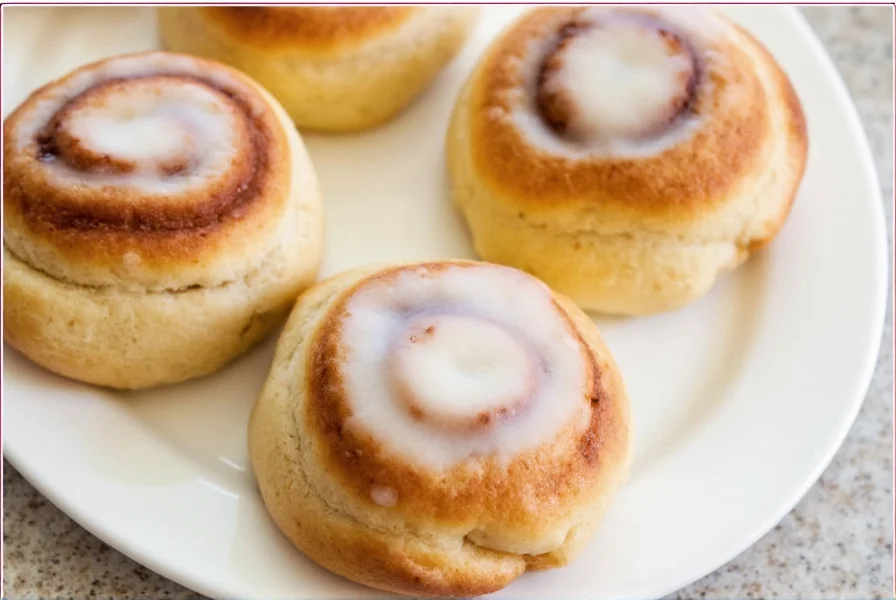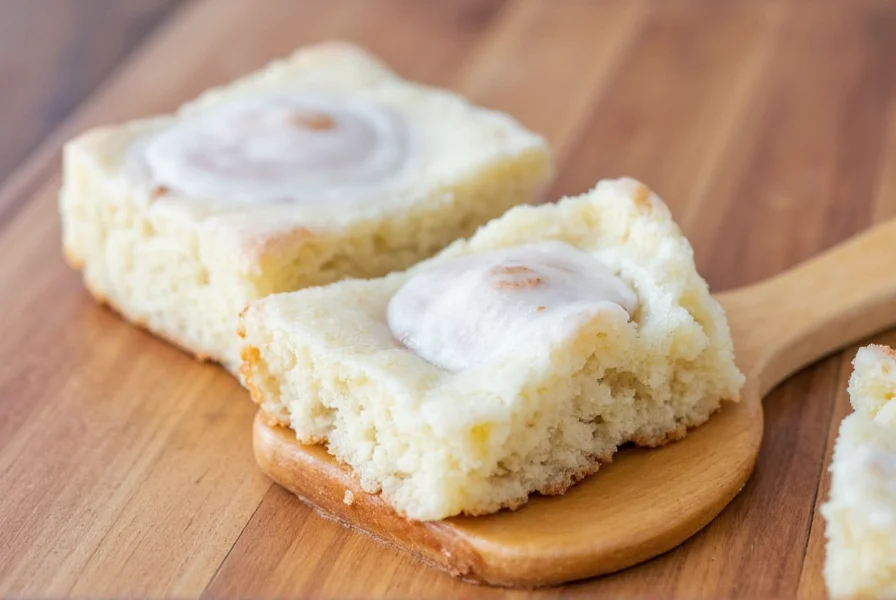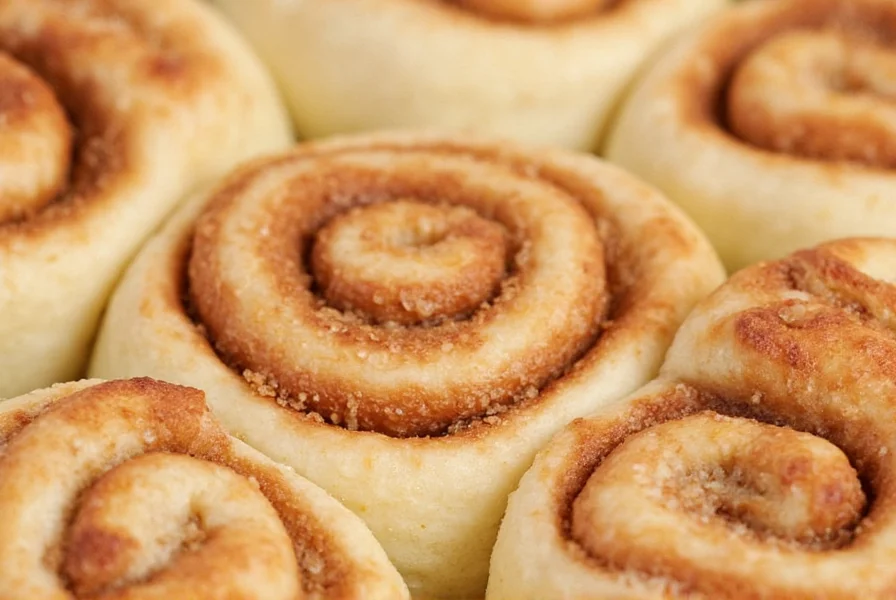This simple cinnamon roll recipe yields soft, fluffy homemade cinnamon rolls with a perfect balance of sweet dough and aromatic cinnamon filling. With just 10 basic ingredients and 3 hours total time (including rising), this beginner-friendly recipe produces bakery-quality results without special equipment. The secret? A foolproof yeast dough that rises reliably and a cinnamon-sugar filling with just the right amount of spice.
There's nothing quite like the aroma of freshly baked cinnamon rolls filling your kitchen. While many recipes seem intimidating, this simple cinnamon roll recipe for beginners proves that homemade cinnamon rolls are achievable for bakers of all skill levels. Forget store-bought tubes or complicated techniques—this from-scratch method delivers superior flavor and texture with straightforward steps.
Why This Simple Cinnamon Roll Recipe Works
After testing dozens of variations, this recipe consistently produces light, tender rolls with a perfectly spiced filling. The dough uses active dry yeast activated in warm milk, creating reliable rise without fancy equipment. Unlike some quick cinnamon roll recipes that compromise on flavor, this version balances simplicity with authentic taste.
Simple Cinnamon Roll Ingredients
Gather these 10 pantry staples before beginning. All measurements are precise for consistent results—baking is a science!
| Ingredient | Amount | Notes |
|---|---|---|
| All-purpose flour | 4½ cups (560g) | Spoon and level—don't scoop directly |
| Granulated sugar | ⅓ cup (65g) | Plus ¾ cup for filling |
| Active dry yeast | 2¼ tsp (7g) | One standard packet |
| Warm whole milk | 1 cup (240ml) | 105-115°F / 40-46°C |
| Unsalted butter | ½ cup (113g) | Melted and cooled |
| Eggs | 2 large | Room temperature |
| Salt | 1 tsp | |
| Ground cinnamon | 2 tbsp | Freshly ground preferred |
| Powdered sugar | 3 cups (360g) | For cream cheese frosting |
| Cream cheese | 4 oz (113g) | Full-fat, softened |

Step-by-Step Instructions
Dough Preparation (20 minutes)
- Activate the yeast: In a small bowl, combine warm milk, 1 tbsp sugar, and yeast. Let sit 5-7 minutes until foamy.
- Mix wet ingredients: In a large bowl, whisk melted butter, eggs, remaining sugar, and salt.
- Combine: Pour yeast mixture into wet ingredients. Gradually add 2 cups flour, mixing until smooth.
- Add remaining flour: Stir in enough remaining flour (½ cup at a time) to form a soft dough that pulls away from sides.
First Rise (1-1½ hours)
- Knead: Turn dough onto lightly floured surface. Knead 5-7 minutes until smooth and elastic.
- Rise: Place in greased bowl, cover with damp cloth. Let rise in warm spot until doubled (about 1 hour).
Filling and Shaping (20 minutes)
- Prepare filling: Mix ¾ cup sugar and 2 tbsp cinnamon in small bowl.
- Roll dough: Punch down risen dough. Roll into 16x21 inch rectangle on floured surface.
- Spread butter: Brush surface with 3 tbsp melted butter, leaving ½ inch border.
- Add filling: Sprinkle cinnamon-sugar mixture evenly over buttered dough.
- Roll tightly: Starting from long side, roll dough into log. Pinch seam to seal.
- Cut: Using dental floss or serrated knife, cut into 12 equal rolls.
Second Rise and Baking (30 minutes)
- Arrange: Place rolls cut-side down in greased 9x13 inch pan.
- Rise again: Cover and let rise 30-45 minutes until puffy.
- Bake: Preheat oven to 350°F (175°C). Bake 20-25 minutes until golden brown.
Cream Cheese Frosting
While rolls bake, prepare this easy cream cheese frosting:
- Beat 4 oz softened cream cheese, 3 tbsp softened butter, and 1 tsp vanilla until smooth
- Gradually add 3 cups powdered sugar
- Add 1-2 tbsp milk until spreadable consistency
- Frost warm rolls immediately after baking

Pro Tips for Perfect Cinnamon Rolls
- Yeast check: If your yeast doesn't foam in step 1, start over with fresh yeast—this is crucial for proper rise
- Dough texture: Properly kneaded dough should feel smooth and slightly tacky but not sticky
- Rising environment: Create a warm spot by placing dough near (not on) a preheating oven
- Cutting technique: Use unflavored dental floss for clean cuts without squishing the rolls
- Frosting timing: Apply frosting to warm (not hot) rolls for perfect absorption without melting
Common Variations
This basic cinnamon roll recipe serves as a foundation for endless creativity:
- Nutty rolls: Add ½ cup chopped pecans or walnuts to filling
- Fruity twist: Sprinkle ¼ cup raisins or dried cranberries over filling
- Spiced version: Add ¼ tsp each nutmeg and cardamom to cinnamon mixture
- Gluten-free: Substitute with 1:1 gluten-free flour blend (results may vary)
- Vegan option: Use plant-based butter, milk, and egg substitute
Storage and Reheating Instructions
These homemade cinnamon rolls stay fresh when stored properly:
- Room temperature: Keep covered for up to 2 days
- Refrigerator: Store in airtight container for up to 1 week
- Freezer: Wrap individual rolls in plastic, then foil; freeze up to 3 months
- Reheating: Microwave 10-15 seconds or warm in 300°F oven for 5 minutes
Troubleshooting Common Issues
Even with this foolproof cinnamon roll recipe, occasional issues may arise:
- Dense rolls: Usually caused by too much flour—measure properly and don't over-knead
- Flat rolls: Insufficient rising time or expired yeast
- Burnt bottoms: Place pan on higher oven rack or use double pan
- Runny frosting: Too much liquid—add more powdered sugar 1 tbsp at a time
- Dry rolls: Overbaking or too much flour in dough
Frequently Asked Questions
Can I make this simple cinnamon roll recipe the night before?
Yes! After shaping the rolls, cover the pan tightly and refrigerate overnight. In the morning, let them sit at room temperature for 30 minutes before baking. The slow rise develops deeper flavor while saving morning preparation time.
Why did my cinnamon rolls come out tough?
Tough cinnamon rolls typically result from over-kneading the dough or using too much flour. Measure flour correctly by spooning into measuring cups and leveling off—never scoop directly. The dough should be slightly tacky but not sticky. Overbaking can also cause toughness, so check at the minimum baking time.
Can I use instant yeast instead of active dry yeast?
Yes, you can substitute instant yeast for active dry yeast in a 1:1 ratio. The main difference is instant yeast can be mixed directly with dry ingredients without proofing in liquid first. If using instant yeast, mix it with the flour before adding wet ingredients.
How do I prevent the filling from leaking out during baking?
To minimize filling leakage, leave a ½-inch border around the edges when spreading the filling, and pinch the seam tightly when rolling. Using melted butter (not oil) as the base layer helps the sugar mixture adhere better. Cutting with dental floss rather than a knife creates cleaner edges that seal better during baking.
Can I make these cinnamon rolls without eggs?
Yes, you can substitute each egg with ¼ cup unsweetened applesauce or 3 tbsp aquafaba (chickpea water). The texture will be slightly different—less rich and slightly denser—but still delicious. For best results with egg substitutes, don't overproof the dough as it may spread more during baking.











 浙公网安备
33010002000092号
浙公网安备
33010002000092号 浙B2-20120091-4
浙B2-20120091-4